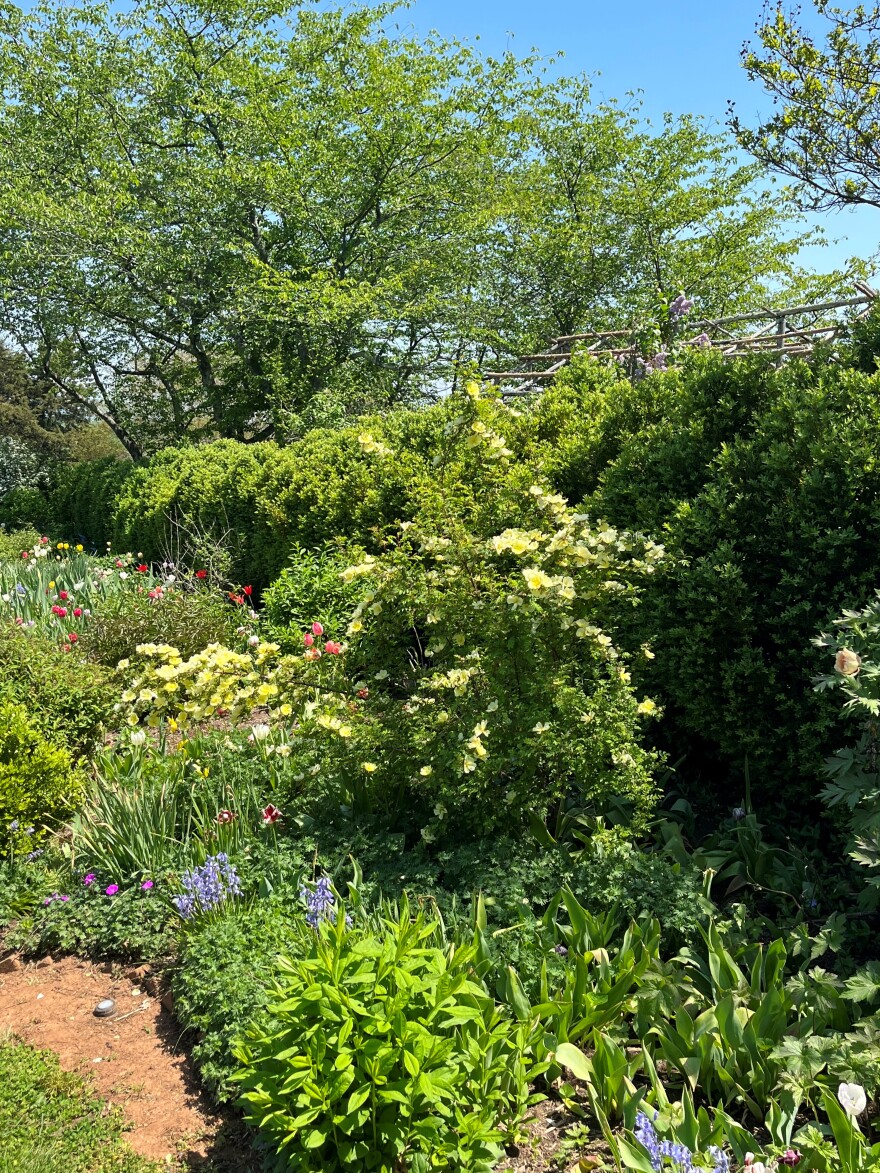The warmth of the April sun always makes me happy as I plan for the final frost days of the season between April 15th and 20th for zone 7. The fun time is coming when we can set plants outside and sow summer’s flower and vegetable seeds. Visits to the local garden center become more like social hours rather than shopping expeditions as gardening friends greet one another.
While purchasing plants, I choose those with strong growth at the base of the plant over ones in full bloom. I also look at the drainage holes of the container to check for roots growing through to avoid purchasing a root-bound plant. Sometimes I end up one and I then take the time to tease out the tight, circular roots before planting for optimum growth and plant longevity.

While sowing the first of the season’s beans, melons, cucumber and squash seeds, I also incorporate flowers into the vegetable garden. Not just a marigold plant here or there but, a broad sweep of zinnias, dill, sunflowers, cosmos, and salvia. I try to represent every type of flower shape in this space so pollinating insects, as well as beneficial insects, will be attracted to the vegetable garden. The beneficial insects will feed on insect pests or use hungry caterpillars for egg-laying dens. To attract the insects, it’s best to plant them in groups, not just one or two of each type. As I sow seeds, I note the non-hybrid selections so I can save the seeds for future seed exchanges. Taking a picture of the seed packet is a quick way to note this, too.
While April is a great time to transplant perennials, ground covers and ornamental grasses, Spring is also the best time to de-thatch and aerate the lawn (particularly those of Bermuda grass and zoysia grass). Mulching landscape beds and around trees will conserve water, plus prevent equipment damage to tree trunks over the course of the season. Please avoid crowning the mulch against the bark; instead keep the mulch thin near the tree base and thicken it as you move out toward the edge of the intended circle.
Another spring task is to install plant supports for tall perennials or those that need assistance holding up heavy blossoms such as peonies. I like to use grid support structures, so the plant retains a natural shape as it grows up through it. If I procrastinate on this task, I always kick myself when flowers flop or tall plants fall into one another.

While planting the summer garden, continue to tend to the spring-flowering bulbs by removing their spent flower heads and leaving the foliage intact until it yellows. Please do not hamper the work of those plants by tying, braiding or hiding the foliage — the nutrients in the foliage need to be returned to the bulb to form next year’s flowers. Once the foliage is completely yellow, you can cut it off. I like to tuck annual-flowering plants around the bulb foliage to prevent empty garden spaces later in the summer.
On your regular garden walks, look for webbing in the branch crotches of cherry and other fruit trees. The webbing is from the Eastern Tent Caterpillar. I control this insect on small trees by removing the webbing with a long stick. I leave the webs alone on large trees for the birds, squirrels and other critters that feast on these insects.
There is still time to prune summer flower shrubs, but wait to prune spring-flowering shrubs until after they bloom. Professionals use the 1/3rd Rule: never remove more than 1/3rd of the mass of the plant. Another professional pruning tip is to avoid using hedge trimmers on shrubs; instead, use hand pruners or loppers to remove growth from within the plant to control the height. Using this pruning method will maintain the natural form of the plant, creating a softer look.
Happy Gardening!
- Peggy Singlemann, host and co-producer of Virginia Home Grown & owner of RVA Gardener LLC


